Abstract
Cell release during milk fermentation by Lactococcus lactis immobilized in calcium alginate beads was examined. Numbers of free cells in the milk gradually increased from 1 x 10(6) to 3 x 10(7) CFU/ml upon successive reutilization of the beads. Rinsing the beads between fermentations did not influence the numbers of free cells in the milk. Cell release was not affected by initial cell density within the beads or by alginate concentration, although higher acidification rates were achieved with increased cell loading. Coating alginate beads with poly-L-lysine (PLL) did not significantly reduce the release of cells during five consecutive fermentations. A double coating of PLL and alginate reduced cell release by a factor of approximately 50. However, acidification of milk with beads having the PLL-alginate coating was slower than that with uncoated beads. Immersing the beads in ethanol to kill cells on the periphery reduced cell release, but acidification activity was maintained. Dipping the beads in aluminum nitrate or a hot CaCl2 solution was not as effective as dipping them in ethanol. Ethanol treatment or heating of the beads appears to be a promising method for maintaining acidification activity while minimizing viable cell release due to loosely entrapped cells near the surface of the alginate beads.
Full text
PDF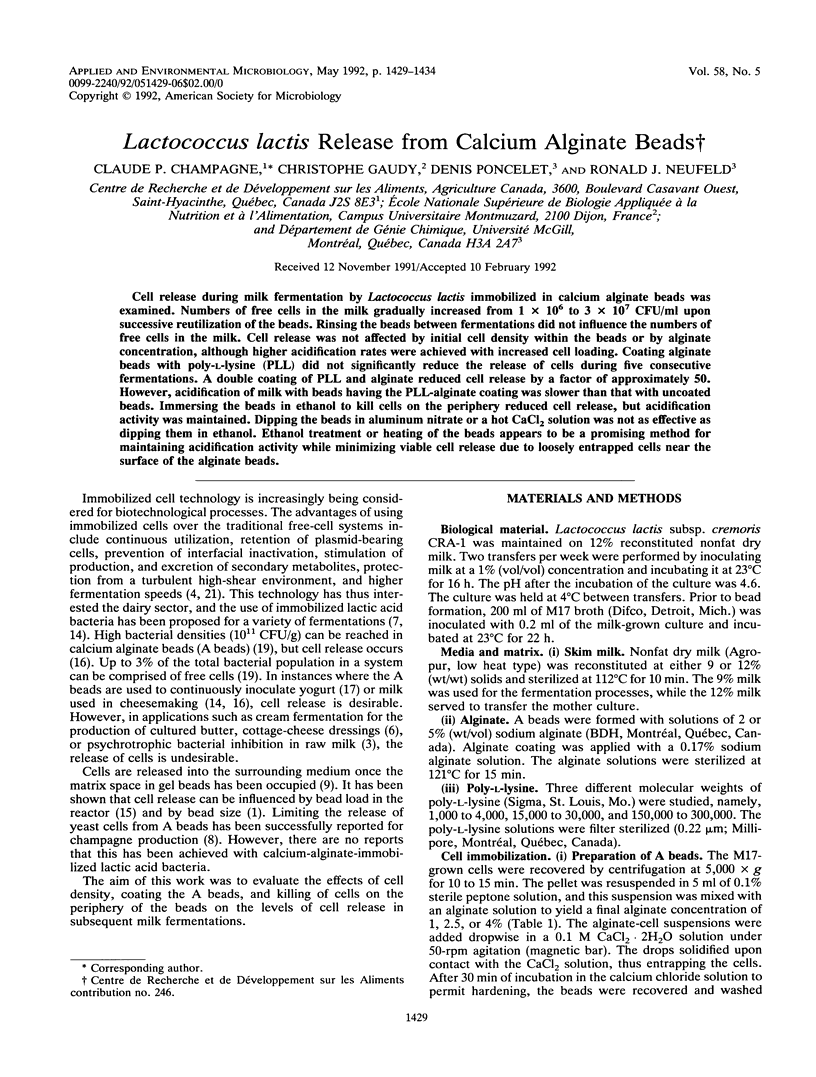
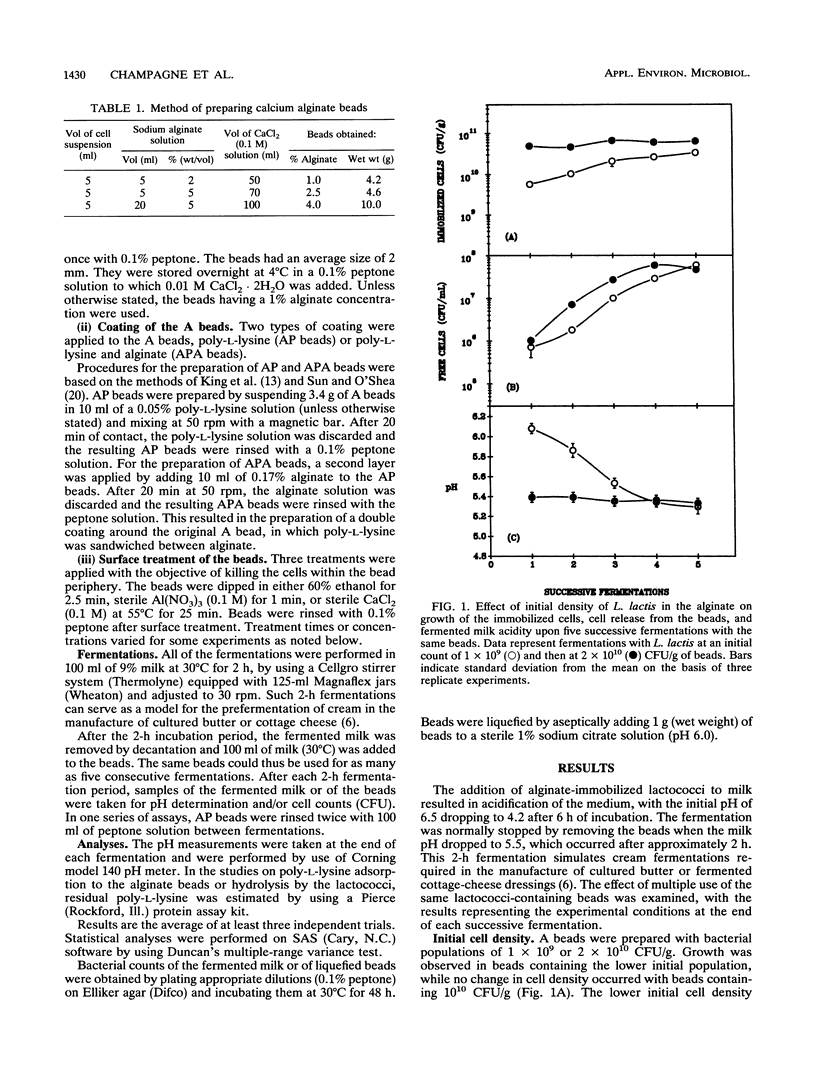
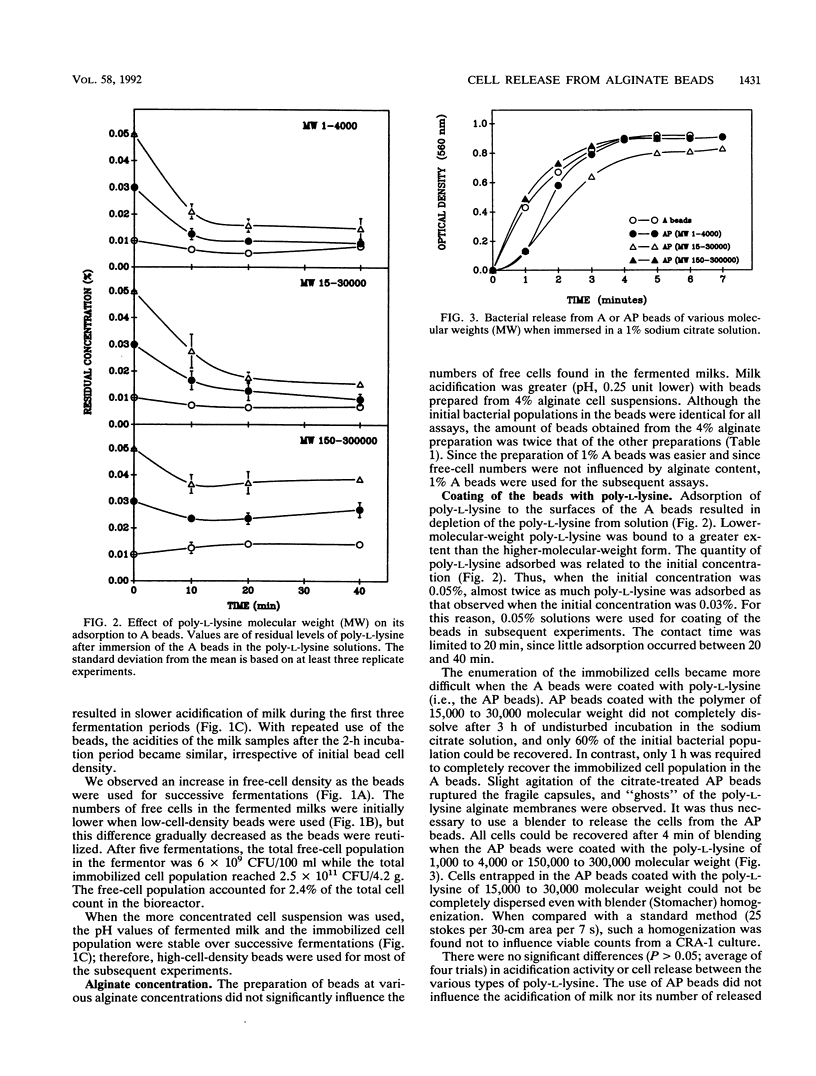
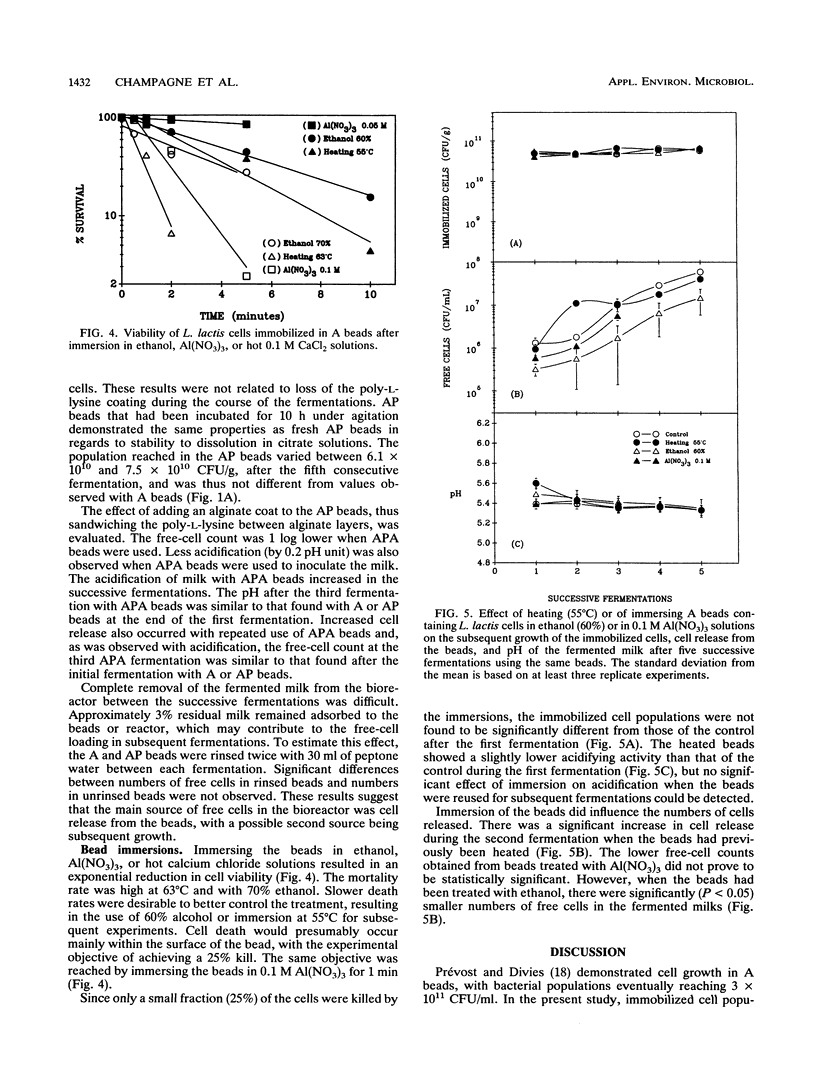
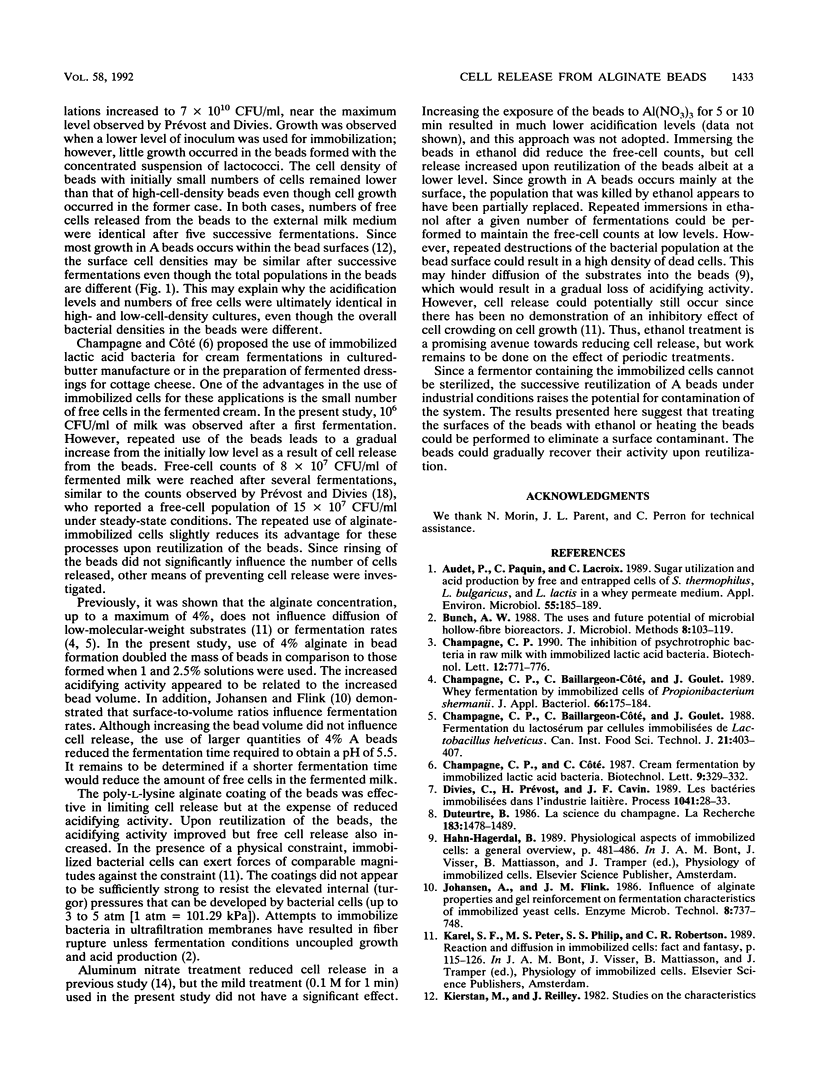
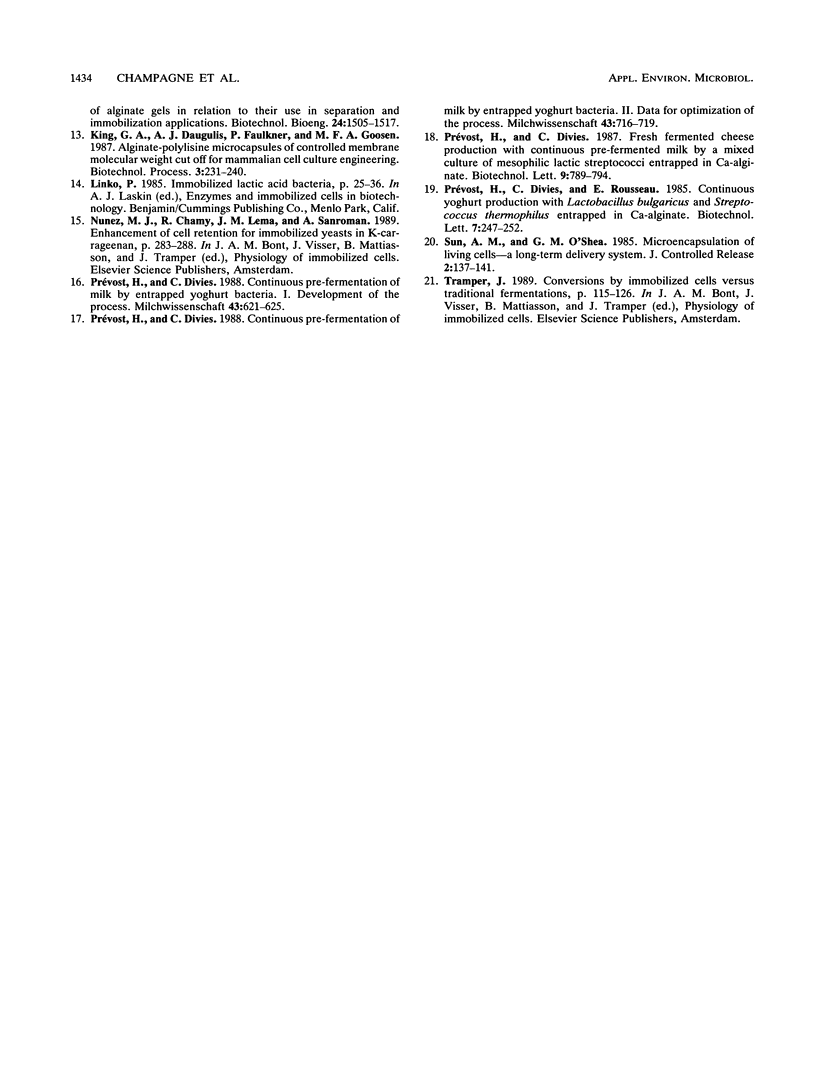
Selected References
These references are in PubMed. This may not be the complete list of references from this article.
- Audet P., Paquin C., Lacroix C. Sugar Utilization and Acid Production by Free and Entrapped Cells of Streptococcus salivarius subsp. thermophilus, Lactobacillus delbrueckii subsp. bulgaricus, and Lactococcus lactis subsp. lactis in a Whey Permeate Medium. Appl Environ Microbiol. 1989 Jan;55(1):185–189. doi: 10.1128/aem.55.1.185-189.1989. [DOI] [PMC free article] [PubMed] [Google Scholar]


